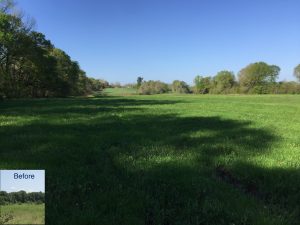Once you have tested your soil and addressed pH issues, it is time to seek professional help in developing a nutrient plan.
Nutrient Plans
Your soil tests might be accompanied by fertilization and other soil recommendations. Still, these are just numbers and it helps to engage professional help in assembling these numbers into a common sense action plan. A nutrient plan can consist of:
- Fertilizer mix for addressing efficiencies.
- Timing and application quantity of nutrients.
- Additional components including over-seeding mix.
Two places to start are your local Ag Extension or National Resource Conservation Service (NRCS) office. In many cases they will make a site visit and help you get the most out of your investments.
Custom Fertilizer Mix
Your local co-op should have the ability to create a custom fertilizer mix to specifically address the deficiencies you discovered in your soil testing. In addition to the supplies, they will have a mixer. This is a key piece of equipment. In addition to thoroughly mixing custom fertilizer elements, it allows you to mix other necessities into your fertilizer including expensive Bermuda seed.
The video below shows 75lbs of Mohawk Bermuda being mixed into 4,000 lbs of fertilizer. Bermuda seed is very fine. The mix is evident in the greenish tint of the post mix fertilizer. This seed is critical in addressing bare spots in a pasture caused by equipment, hogs, or weeds.
Thriving Pastures
Assuming you’ve addressed pH and time the application of your fertilizer and seed with moderate rainfall, you will see a drastic difference in the health of your pasture. I’ve included a couple of before and after pictures of a 12 acre section of our acreage. If you do proper soil testing and address pasture deficiencies in a professional developed plan, the results appear quickly. The video in this post and the before/after picture were shot 4 weeks apart. You can see the difference in the stand thickness and color.
